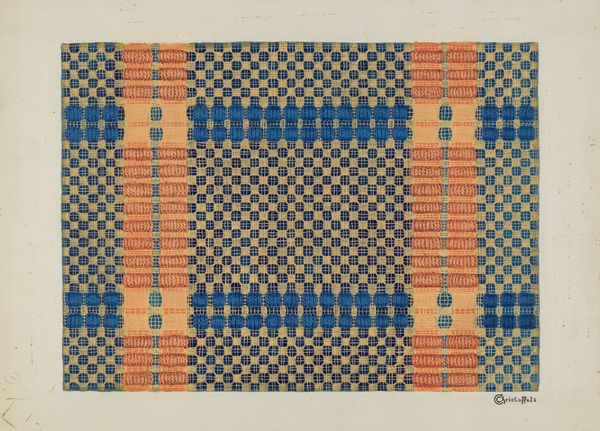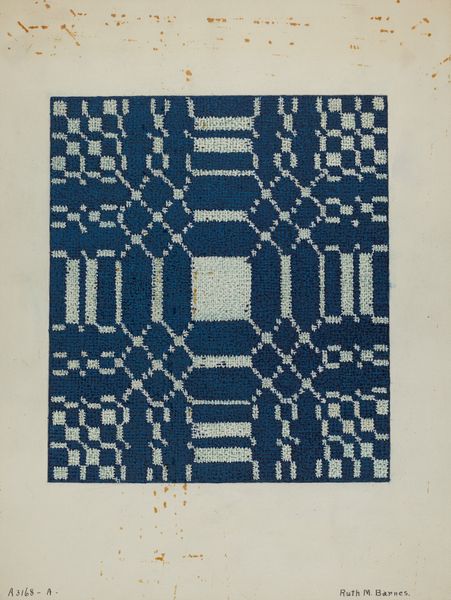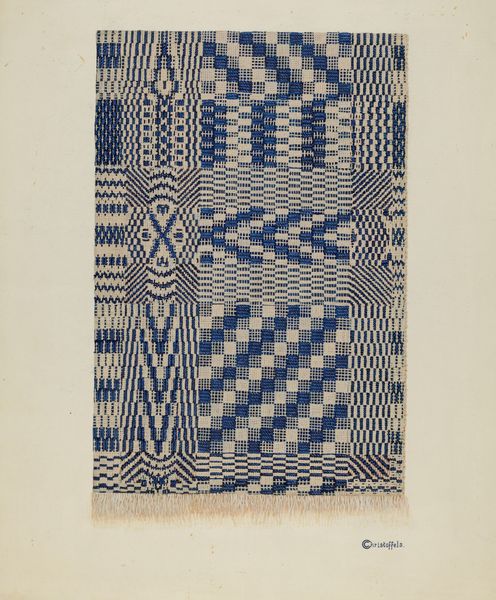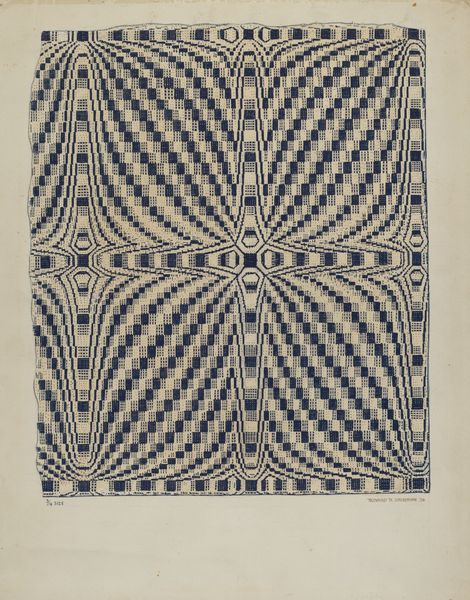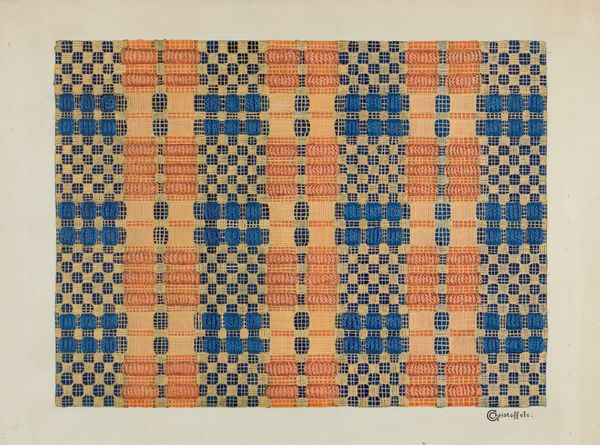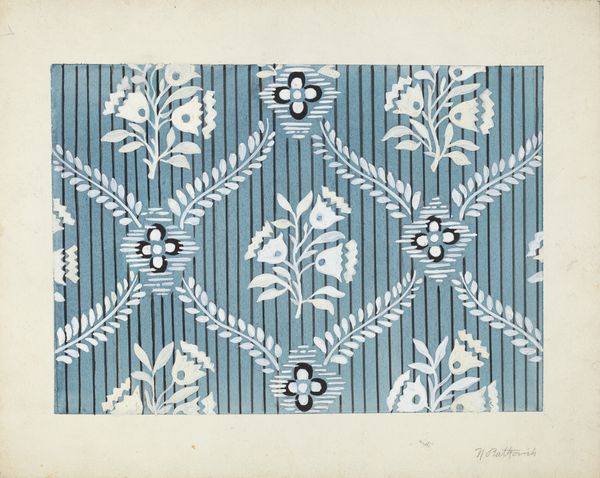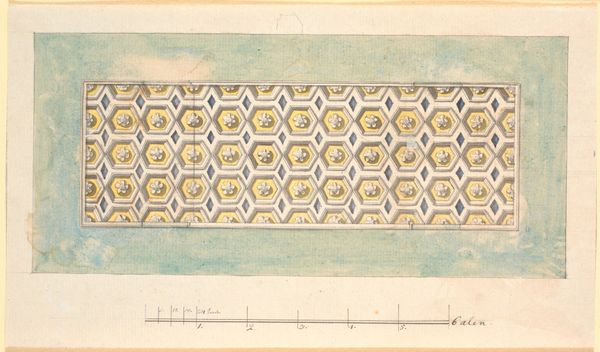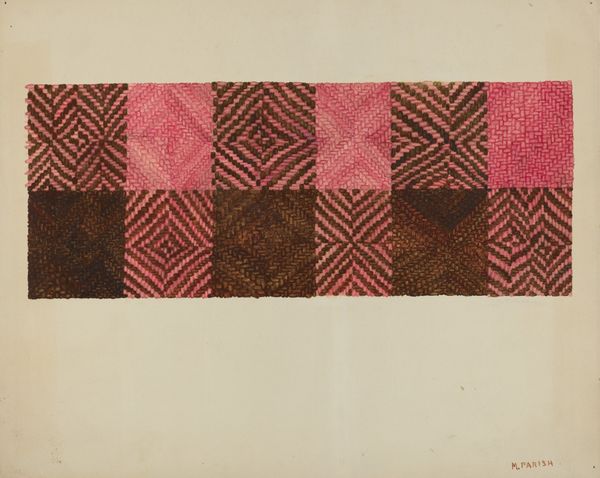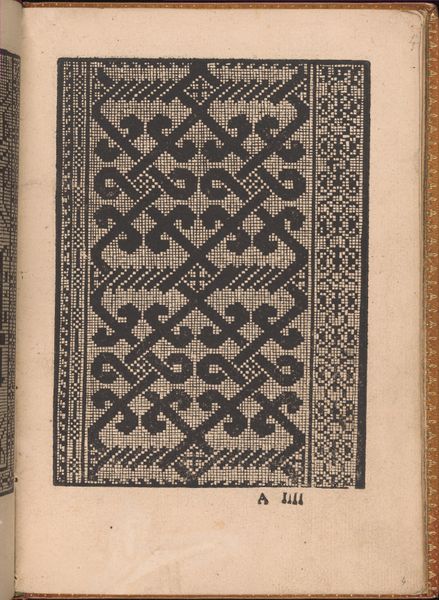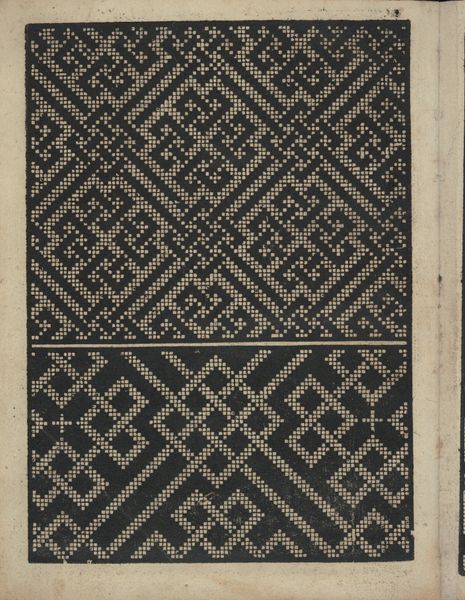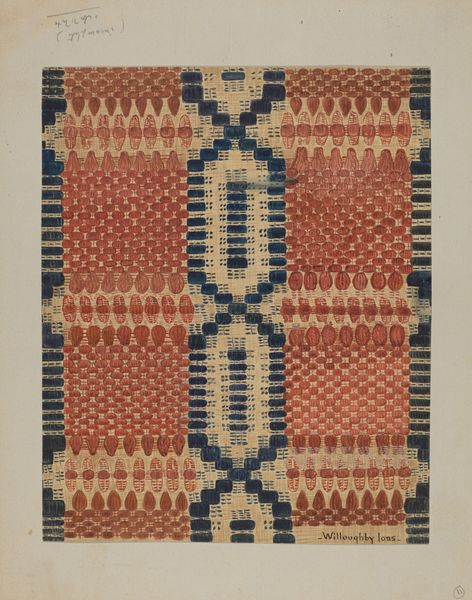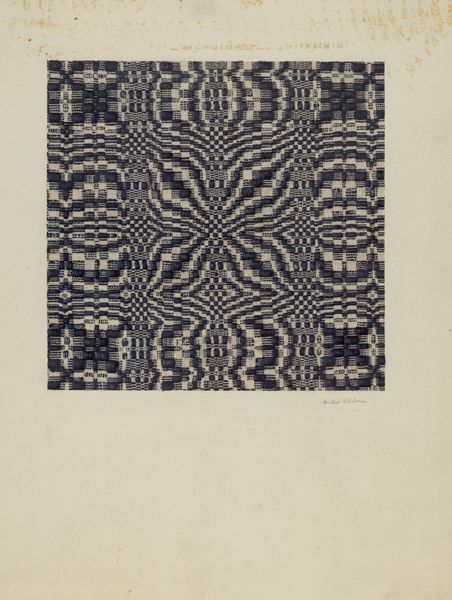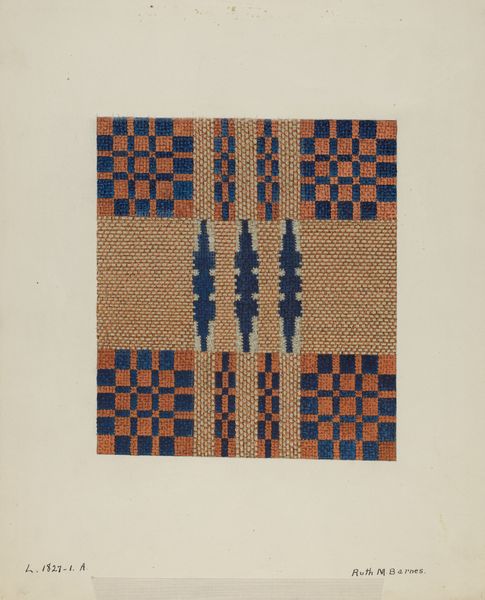
Copyright: Hans Hinterreiter,Fair Use
Editor: So, we're looking at "No. 258" by Hans Hinterreiter, made in 1957, using mixed media and acrylic paint. It's striking how precise and repetitive the geometric pattern is. What do you make of it? Curator: I see a calculated exploration of industrial production applied to art making. Notice the interplay between color and form. Each rhombus, methodically painted, contributes to a larger, almost textile-like pattern. Consider this alongside the rise of consumerism and mass production in the 50s. Editor: A textile feel, yes! Almost like a printed fabric. Do you think that was intentional? Curator: Absolutely. Hinterreiter likely wanted to challenge the hierarchy separating fine art from craft, blurring those boundaries through his choice of material and repetitive design. Acrylic paints themselves, a relatively new medium at the time, speak to this experimentation. He uses material means to ask "What *is* art, and who decides?" Editor: That’s interesting – thinking about the materials as part of the message itself. How the artwork is made impacts our reading. Curator: Precisely! This piece pushes us to examine art through its production; labor, material and even its eventual consumption. Editor: That changes my perspective on it entirely. I was just seeing a pretty pattern, but now I understand the layered ideas on process! Curator: By focusing on those material elements, the pattern then reads as something other than simply surface level visual harmony. A challenge of those traditional "high art" boundaries as we discussed.
Comments
No comments
Be the first to comment and join the conversation on the ultimate creative platform.
